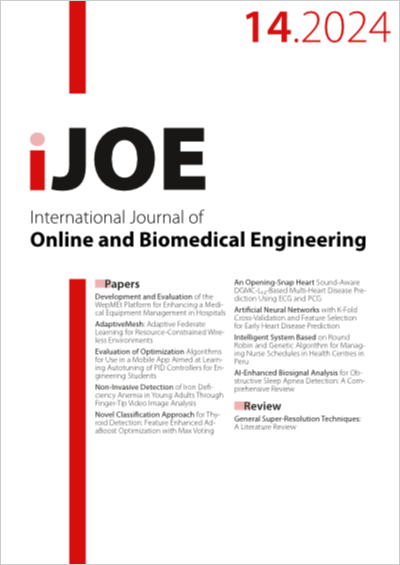General Super-Resolution Techniques
A Literature Review
DOI:
https://doi.org/10.3991/ijoe.v20i14.50107Keywords:
super-resolution, machine learning, neural networks, deep learning, blood cellsAbstract
Super-resolution (SR) is a technique aimed at improving the resolution of images. In blood cell imaging, it aids in the accurate identification and classification of cells. Improving the analysis process of microscopic images is necessary to achieve better disease diagnoses, especially the image quality, so that health professionals can reach a diagnosis closer to the ideal. For those aiming to implement SR algorithms to analyze microscopic blood cell images, it is crucial to determine which algorithms are in use, their intended purposes, future trends, and current gaps. No review of SR techniques focusing on blood cells was found in the literature. Therefore, this paper presents various techniques to improve the resolution of blood images. Data screening and inclusion followed the PRISMA method. Articles were grouped into four subtopics: generic (25.0%), vascular imaging (28.1%), cell imaging (9.4%), and blood cell imaging techniques (37.5%). Results revealed that more research efforts on cell imaging techniques would be required to achieve a more balanced distribution. This study contributes to knowledge by reviewing the most used techniques, their purposes, and applications, helping researchers find the best technique for their studies, especially for pathological researchers involved in image enhancement.
Downloads
Published
How to Cite
Issue
Section
License
Copyright (c) 2024 Isabela D. G de Carvalho, Percy Nohama, Guilherme N. Nogueira

This work is licensed under a Creative Commons Attribution 4.0 International License.



